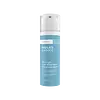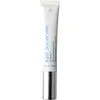What's inside
What's inside
 Key Ingredients
Key Ingredients

 Benefits
Benefits

 Concerns
Concerns

 Ingredients Side-by-side
Ingredients Side-by-side

Water
Skin ConditioningCyclopentasiloxane
EmollientButylene Glycol
HumectantDimethicone
EmollientGlycerin
HumectantPolysorbate 20
EmulsifyingPolysilicone-11
Lauryl PEG-9 Polydimethylsiloxyethyl Dimethicone
Skin ConditioningHyaluronic Acid
HumectantResveratrol
AntioxidantNiacinamide
SmoothingQuercetin
AntioxidantAdenosine
Skin ConditioningTetrahexyldecyl Ascorbate
AntioxidantTocopherol
AntioxidantPhospholipids
Skin ConditioningUbiquinone
AntioxidantEpigallocatechin Gallate
AntioxidantSea Whip Extract
Skin ConditioningBisabolol
MaskingBeta-Glucan
Skin ConditioningPhytic Acid
Xanthan Gum
EmulsifyingAcrylates/C10-30 Alkyl Acrylate Crosspolymer
Emulsion StabilisingSodium Hydroxide
BufferingDisodium EDTA
Ethylhexylglycerin
Skin ConditioningPhenoxyethanol
PreservativeWater, Cyclopentasiloxane, Butylene Glycol, Dimethicone, Glycerin, Polysorbate 20, Polysilicone-11, Lauryl PEG-9 Polydimethylsiloxyethyl Dimethicone, Hyaluronic Acid, Resveratrol, Niacinamide, Quercetin, Adenosine, Tetrahexyldecyl Ascorbate, Tocopherol, Phospholipids, Ubiquinone, Epigallocatechin Gallate, Sea Whip Extract, Bisabolol, Beta-Glucan, Phytic Acid, Xanthan Gum, Acrylates/C10-30 Alkyl Acrylate Crosspolymer, Sodium Hydroxide, Disodium EDTA, Ethylhexylglycerin, Phenoxyethanol
Water
Skin ConditioningCaprylic/Capric Triglyceride
MaskingDivinyldimethicone/Dimethicone Copolymer
Cetearyl Alcohol
EmollientDimethicone
EmollientGlycerin
HumectantPropanediol
SolventCyclopentasiloxane
EmollientSodium Ascorbyl Glucoside
HumectantBis-PEG/PPG-20/5 PEG/PPG-20/5 Dimethicone
EmulsifyingMethoxy PEG/PPG-25/4 Dimethicone
EmulsifyingGlyceryl Stearate
EmollientSh-Polypeptide-7
AntiseborrhoeicSodium Chloride
MaskingSodium Phosphate
BufferingDisodium EDTA
Ammonium Acryloyldimethyltaurate/Vp Copolymer
Dimethiconol
EmollientCyclohexasiloxane
EmollientGlucosamine Hcl
Tocopheryl Acetate
AntioxidantAllantoin
Skin ConditioningPortulaca Oleracea Extract
Skin ConditioningButylene Glycol
HumectantElaeis Guineensis Oil
EmollientTocotrienols
Skin ConditioningPisum Sativum Extract
Skin ConditioningBambusa Vulgaris Extract
Skin ConditioningC12-13 Pareth-23
CleansingC12-13 Pareth-3
EmulsifyingTocopherol
AntioxidantXanthan Gum
EmulsifyingProtease
ExfoliatingSodium Hydroxide
BufferingHippophae Rhamnoides Fruit Extract
Skin ConditioningMaltodextrin
AbsorbentEthylhexylglycerin
Skin ConditioningPhenoxyethanol
PreservativeWater, Caprylic/Capric Triglyceride, Divinyldimethicone/Dimethicone Copolymer, Cetearyl Alcohol, Dimethicone, Glycerin, Propanediol, Cyclopentasiloxane, Sodium Ascorbyl Glucoside, Bis-PEG/PPG-20/5 PEG/PPG-20/5 Dimethicone, Methoxy PEG/PPG-25/4 Dimethicone, Glyceryl Stearate, Sh-Polypeptide-7, Sodium Chloride, Sodium Phosphate, Disodium EDTA, Ammonium Acryloyldimethyltaurate/Vp Copolymer, Dimethiconol, Cyclohexasiloxane, Glucosamine Hcl, Tocopheryl Acetate, Allantoin, Portulaca Oleracea Extract, Butylene Glycol, Elaeis Guineensis Oil, Tocotrienols, Pisum Sativum Extract, Bambusa Vulgaris Extract, C12-13 Pareth-23, C12-13 Pareth-3, Tocopherol, Xanthan Gum, Protease, Sodium Hydroxide, Hippophae Rhamnoides Fruit Extract, Maltodextrin, Ethylhexylglycerin, Phenoxyethanol
Ingredients Explained
These ingredients are found in both products.
Ingredients higher up in an ingredient list are typically present in a larger amount.
Butylene Glycol (or BG) is used within cosmetic products for a few different reasons:
Overall, Butylene Glycol is a safe and well-rounded ingredient that works well with other ingredients.
Though this ingredient works well with most skin types, some people with sensitive skin may experience a reaction such as allergic rashes, closed comedones, or itchiness.
Learn more about Butylene GlycolCyclopentasiloxane, or D5, is a silicone used to improve texture of products and trap moisture.
D5 is considered lightweight and volatile. Volatile means it evaporates quickly after application. Once evaporated, D5 leaves a thin barrier that helps keep skin hydrated.
It is also an emollient. Emollients help soften the skin and prevent water loss. Silicones create a silky texture in products. D5 helps other ingredients become more spreadable.
Studies show D5 is safe to use in skincare products. We recommend speaking with a skincare professional if you have concerns.
Learn more about CyclopentasiloxaneDimethicone is a type of synthetic silicone created from natural materials such as quartz.
What it does:
Dimethicone comes in different viscosities:
Depending on the viscosity, dimethicone has different properties.
Ingredients lists don't always show which type is used, so we recommend reaching out to the brand if you have questions about the viscosity.
This ingredient is unlikely to cause irritation because it does not get absorbed into skin. However, people with silicone allergies should be careful about using this ingredient.
Note: Dimethicone may contribute to pilling. This is because it is not oil or water soluble, so pilling may occur when layered with products. When mixed with heavy oils in a formula, the outcome is also quite greasy.
Learn more about DimethiconeDisodium EDTA plays a role in making products more stable by aiding other preservatives.
It is a chelating agent, meaning it neutralizes metal ions that may be found in a product.
Disodium EDTA is a salt of edetic acid and is found to be safe in cosmetic ingredients.
Learn more about Disodium EDTAEthylhexylglycerin (we can't pronounce this either) is commonly used as a preservative and skin softener. It is derived from glyceryl.
You might see Ethylhexylglycerin often paired with other preservatives such as phenoxyethanol. Ethylhexylglycerin has been found to increase the effectiveness of these other preservatives.
Glycerin is already naturally found in your skin. It helps moisturize and protect your skin.
A study from 2016 found glycerin to be more effective as a humectant than AHAs and hyaluronic acid.
As a humectant, it helps the skin stay hydrated by pulling moisture to your skin. The low molecular weight of glycerin allows it to pull moisture into the deeper layers of your skin.
Hydrated skin improves your skin barrier; Your skin barrier helps protect against irritants and bacteria.
Glycerin has also been found to have antimicrobial and antiviral properties. Due to these properties, glycerin is often used in wound and burn treatments.
In cosmetics, glycerin is usually derived from plants such as soybean or palm. However, it can also be sourced from animals, such as tallow or animal fat.
This ingredient is organic, colorless, odorless, and non-toxic.
Glycerin is the name for this ingredient in American English. British English uses Glycerol/Glycerine.
Learn more about GlycerinPhenoxyethanol is a preservative that has germicide, antimicrobial, and aromatic properties. Studies show that phenoxyethanol can prevent microbial growth. By itself, it has a scent that is similar to that of a rose.
It's often used in formulations along with Caprylyl Glycol to preserve the shelf life of products.
Sodium Hydroxide is also known as lye or caustic soda. It is used to adjust the pH of products; many ingredients require a specific pH to be effective.
In small amounts, sodium hydroxide is considered safe to use. However, large amounts may cause chemical burns due to its high alkaline.
Your skin has a natural pH and acid mantle. This acid mantle helps prevent harmful bacteria from breaking through. The acid mantle also helps keep your skin hydrated.
"Alkaline" refers to a high pH level. A low pH level would be considered acidic.
Learn more about Sodium HydroxideTocopherol (also known as Vitamin E) is a common antioxidant used to help protect the skin from free-radicals and strengthen the skin barrier. It's also fat soluble - this means our skin is great at absorbing it.
Vitamin E also helps keep your natural skin lipids healthy. Your lipid skin barrier naturally consists of lipids, ceramides, and fatty acids. Vitamin E offers extra protection for your skin’s lipid barrier, keeping your skin healthy and nourished.
Another benefit is a bit of UV protection. Vitamin E helps reduce the damage caused by UVB rays. (It should not replace your sunscreen). Combining it with Vitamin C can decrease sunburned cells and hyperpigmentation after UV exposure.
You might have noticed Vitamin E + C often paired together. This is because it is great at stabilizing Vitamin C. Using the two together helps increase the effectiveness of both ingredients.
There are often claims that Vitamin E can reduce/prevent scarring, but these claims haven't been confirmed by scientific research.
Learn more about TocopherolWater. It's the most common cosmetic ingredient of all. You'll usually see it at the top of ingredient lists, meaning that it makes up the largest part of the product.
So why is it so popular? Water most often acts as a solvent - this means that it helps dissolve other ingredients into the formulation.
You'll also recognize water as that liquid we all need to stay alive. If you see this, drink a glass of water. Stay hydrated!
Learn more about WaterXanthan gum is used as a stabilizer and thickener within cosmetic products. It helps give products a sticky, thick feeling - preventing them from being too runny.
On the technical side of things, xanthan gum is a polysaccharide - a combination consisting of multiple sugar molecules bonded together.
Xanthan gum is a pretty common and great ingredient. It is a natural, non-toxic, non-irritating ingredient that is also commonly used in food products.
Learn more about Xanthan Gum